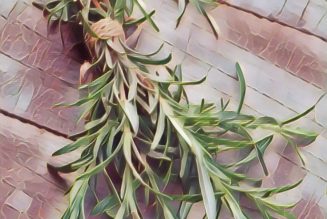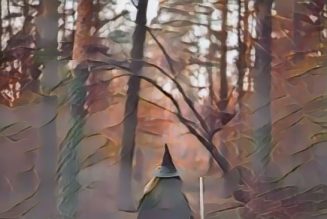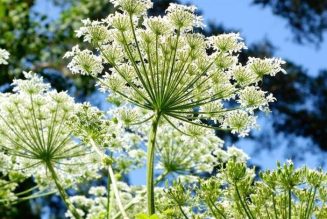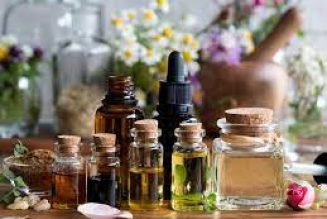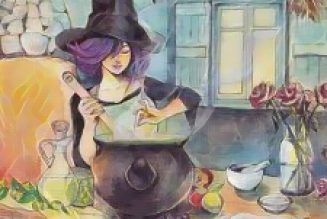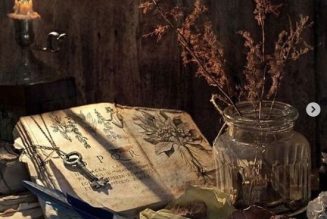Herbal medicine has been practiced for as long as humans have been around. It was the only form of physcial medicine (except for acupuncture), available until the last century. When it was discovered that the active ingredient of an herb or chemical could be isolated, and in may cases reproduced in a lab, medicine went from treating the patient to treating the symptoms. While this has been a good thing if extreme measures were call for, it further seperated us from nature and Her gifts. It also upset the balance of nature both externally and within our own bodies. Externally, the focus of the last fifty years has been, “satisfy our wants and needs now and we will figure out how to fix it later. After all, we have science!” The toll of that attitude on our environment and quality of life is easy to see. Internally more and different diseases have been seen in the last century than in any previous thime in history. Cancer affects 1/3 or our population. Allergies and sensitivities are now more the norm then not. In focusing on the one goal, we missed the picture. Herbal medicine, combind with good food, free of unbalancing chemicals and a healty mental state, would put us back in balance with nature, which will have to happen if we are going to survive on this planet for much longer.The major thing to remember about herbal medicine is, although there are some very powerful herbs out there, most work gently with your system, not against it. The upshot of this is that taking herbs will generally not give you the immediate feeling of something being fought off. Rather, you will just notice that your overall health has improved, and that any extremes of health and or emtion will have become less extreme. Preventative herbal medeicine, such as an herbal multivitamin, will keep your system at is optimum. Sickness is much less likely to occur, and when it does, your system will correct the imbalance more quickly. Your body is smarter than you think it might be. When you take a vitamin, especially without food, your body doesn not think the vitamin is digestible, so it passes it through without fully breaking it down. So while your multivitamin may be full of all these keen vitamins, you can’t use most of them. Herbal vitamins are food, however, so they can be optimized fully.It is important, if your are really going to get into herbal medicine, to have at lease 2 different books to draw reference from and one of the books should be a recent book. Different books will say different things, so you should compare different sources to get a reliable opinion. Discoveries, both good and bad, are constantly being made about herbs, so it is good th have something recent with all the latest information.Herbal Preparations
The use of herbs in all facets of life has been around quite literally since the beginning of time. Nearly all of commercial based medicine, flavorings, scents, even cosmetics, have their base in natural sources. Which is why it never fails to surprise me when I hear the words, “yeah, but does it really work?”Many of the recipes acquired are written in simple terms that need not be confusing once you come to understand the terminology most commonly used. This article is written to simply explain the terms used in herbal preparation so that anyone can take a recipe and use it to it’s full advantage, with insight.There are quite simply, two basic ways that herbs are used:
1.) Internally – such as infusions(most commonly called teas), decoctions (also referred to as a tea, but with a different preparation explained later), tinctures, and syrups. There are more internal means, but these are the most common I am asked for.
2.) Externally – Baths (common in aromatherapy), ointments, compresses, poultices, and liniments. Each of these are explained in simplest terms.Internal PreparationInfusion – The most common method of internal herbal preparation, usually referred to as a “tea”. Infusions are called for when using soft plant parts, such as leaves, flowers or green stems. If you must use hard plant parts, please refer to Decoction. Fresh or dried herbs can be used, however, it is important to remember that if the recipe calls for dried herbs, and you chose to use fresh instead, that’s fine, but the measurement will be different. That amount should be as follows: 1 part dried herb is equal to 3 parts fresh. So if a recipe calls for 1 teaspoon of dried lavender, for instance, you should make it 3 teaspoons of fresh lavendar. When preparing an infusion using an aromatic herb, such as chamomile or lavender, use a pot with a well sealed lid, so that you don’t lose as much of the natural oils in evaporation, as these are essential to the purpose. (These herbs also tend to be sensitive to heat, so you may chose to make a cold infusion by simply leaving the herbs in water for six to 12 hours, preferably in an earthenware pot if you have one sealed. But that is simply a matter of preference and purpose as well.) Whenever possible, infusions should be prepared only on an as needed basis, as the shelf life of the infusions is not a long period of time, varying from recipe to recipe. To make an infusion Use a china or glass pot, (warmed) and add 1 teaspoon of herbal mixture per cup of tea. Add one cup of boiling water per teaspoon of herbal mixture. Steep for 10-15 minutes.Decoction Similar to an infusion, but it is more called for when using hard of woody herbal mixtures, such as bark, roots, wood, nuts or seeds. I find it is best to grind these to powder form in some instances, in order to release the natural oils. That again, is up to preference. These herbs require more heat to release the natural oils, therein lies the difference between infusion and decoction. If your recipe calls for soft herbs as well as hard herbs, prepare the two separately as a decoction and infusion, and mix after the decoction is processed. This way, the more sensitive herbs aren’t lost to burning or evaporation, thus losing it’s potency.
To Make A Decoction Use one teaspoon of herbal mixture per cup of water into a pot or saucepan. If the herbs are dried, they should be powdered or in small pieces. Fresh herbs should be in small chunks. Add the water called for by the amount of herbal mixture added, and bring the mixture to a boil. Simmer for the amount of time called for by the specific recipe or herbs used. I find that it is rarely longer than 15 minutes. If you are using aromatic herbs, put a lid on the pot to retain it’s potency. Strain into a teacup or pot and serve while it is hot.Tinctures are usually alcohol based preparations, with the alcohol acting as a natural preservative. Although, tinctures are also commonly made using vinegar or glycerin. Tinctures tend to be much stronger than infusions and decoctions, thus should be treated accordingly.
If you are going to use alcohol as your base for tinctures, I find it is best to use alcohol that is at least 30% by volume, or 60 proof. Vodka makes a good base for a tincture. Tinctures can be used as they are, or mixed with tea, or when called for a bath, foot bath, oil or ointment. Lozenges can be made with them as well. The most popular tincture and most common is one made with wine. That would be technically, a mulled or spiced wine, as it’s commonly known. When making a vinegar tincture, use a natural vinegar, such as apple cider vinegar, not a synthetic one, such as white vinegar. Vinegar tinctures are gaining in popularity, and are wonderful to cook with, as well as tend to be very fragrant. Glycerin tinctures tend to be milder to the stomach, but the drawback is that the resinous or oily herbs do not dissolve as well in preparation. To make a tincture Finely chop or grind the herbal mixture into a container with a tight seal. Use 4 ounces of herbal mixture to every pint of alcohol, and seal. Keep the jar in a warm place for two weeks, taking it out daily to shake up the mixture. When done, take the liquid and pour through a soft muslin cloth into a bowl. Wring the herbal filled cloth into the bowl to get out the residue. Store the tincture in a dark bottle, keeping it well sealed.External Herbal PreparationsBaths are one of the most pleasant ways to enjoy herbs, as well as your efforts with infusions and decoctions. A normal sized bath uses approximately one pint of infusion or decoction added to it. For the most part, aromatic herbs make the better additives to baths, as the oils are absorbed not only through the skin, but provide soothing comfort through the aroma. You can use cheese cloth or muslin, making a pouch of sorts, adding the herbs, and suspend it so that it is directly below the faucet. The pouring water helps to distribute the herbal mixture evenly throughout the water. once your bath is drawn, if you feel that it is necessary, let the bag float in the water to continuously add the mixture during your bath.Ointments – Also called salves, are preparations that ban be applied to the skin. They can be anything from greasy to thick in substance, depending on the base that you use in preparation. Petroleum jelly is a simple ointment base, but I suggest it only when using naturally irritating oils such as cinnamon. The petroleum will act as a buffer between the sensitive skin and the oil, allowing you to fully enjoy the aromatic benefit of the herb, without having as large a chance of irritation. Natural bases are better in other instances.
Preparation For Making An Ointment Use 2 ounces of white wax, 3 ounces of lard, 3 fluid ounces of oil [almond, or olive is great ]. Melt the wax and lard in the oil in a double boiler, remove from heat when melted, add almond oil and stir until cool. Pour the mixture into a container for storage. Of course, you must add the herb mixture to this base, as it’s no good without it:)Poultices And Compresses Very similar in form, but often used differently. A compress is used by soaking linen, gauze, or similar fabric in an infusion or decoction and applied to the affected area. The heat activates the herbs to release the healing ability. A Poultice is different in the basis that it is the application of the solid herbal mixture either directly or wrapped in a linen or gauzy material to the affected area. Dried herbs must be made into a paste in order to be used in a poultice. You can use a hot water bottle in order to keep a poultice warm while applying it. Poultices are more commonly used to draw out infection or heat in a wounded area.Liniments are strictly used externally, and are more commonly used in massage or to stimulate muscles or ligaments. They are usually made with alcohol, herbal oils, as well as dried and fresh herbs so that they may be more readily absorbed through the skin. Golden seal and cramp bark are good additives for liniment. The main ingredient of liniment is usually cayenne.These are, by no means, the sum total of uses that herbs have, or the limits of preparation. This article represents the most commonly used ones, as well as the most common ones about which there seems to be some confusion. Especially with novices starting out in their quest for understanding the herbal recipes they are trying. I hope that it makes a difference, adding insight and clearing a path. Enjoy!!














